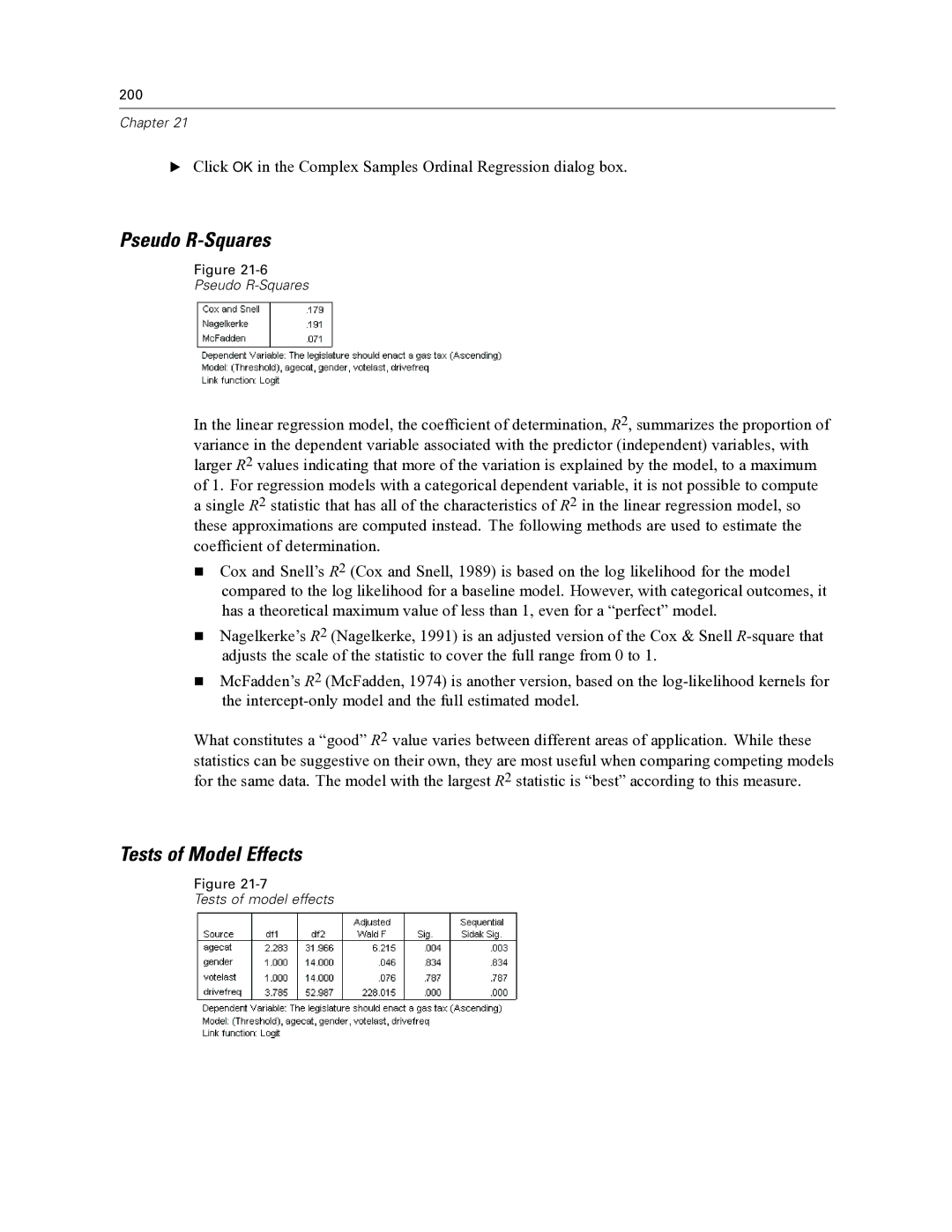
200
Chapter 21
EClick OK in the Complex Samples Ordinal Regression dialog box.
Pseudo R-Squares
Figure
Pseudo R-Squares
In the linear regression model, the coefficient of determination, R2, summarizes the proportion of variance in the dependent variable associated with the predictor (independent) variables, with larger R2 values indicating that more of the variation is explained by the model, to a maximum of 1. For regression models with a categorical dependent variable, it is not possible to compute a single R2 statistic that has all of the characteristics of R2 in the linear regression model, so these approximations are computed instead. The following methods are used to estimate the coefficient of determination.
Cox and Snell’s R2 (Cox and Snell, 1989) is based on the log likelihood for the model compared to the log likelihood for a baseline model. However, with categorical outcomes, it has a theoretical maximum value of less than 1, even for a “perfect” model.
Nagelkerke’s R2 (Nagelkerke, 1991) is an adjusted version of the Cox & Snell
McFadden’s R2 (McFadden, 1974) is another version, based on the
What constitutes a “good” R2 value varies between different areas of application. While these statistics can be suggestive on their own, they are most useful when comparing competing models for the same data. The model with the largest R2 statistic is “best” according to this measure.
Tests of Model Effects
Figure
Tests of model effects
